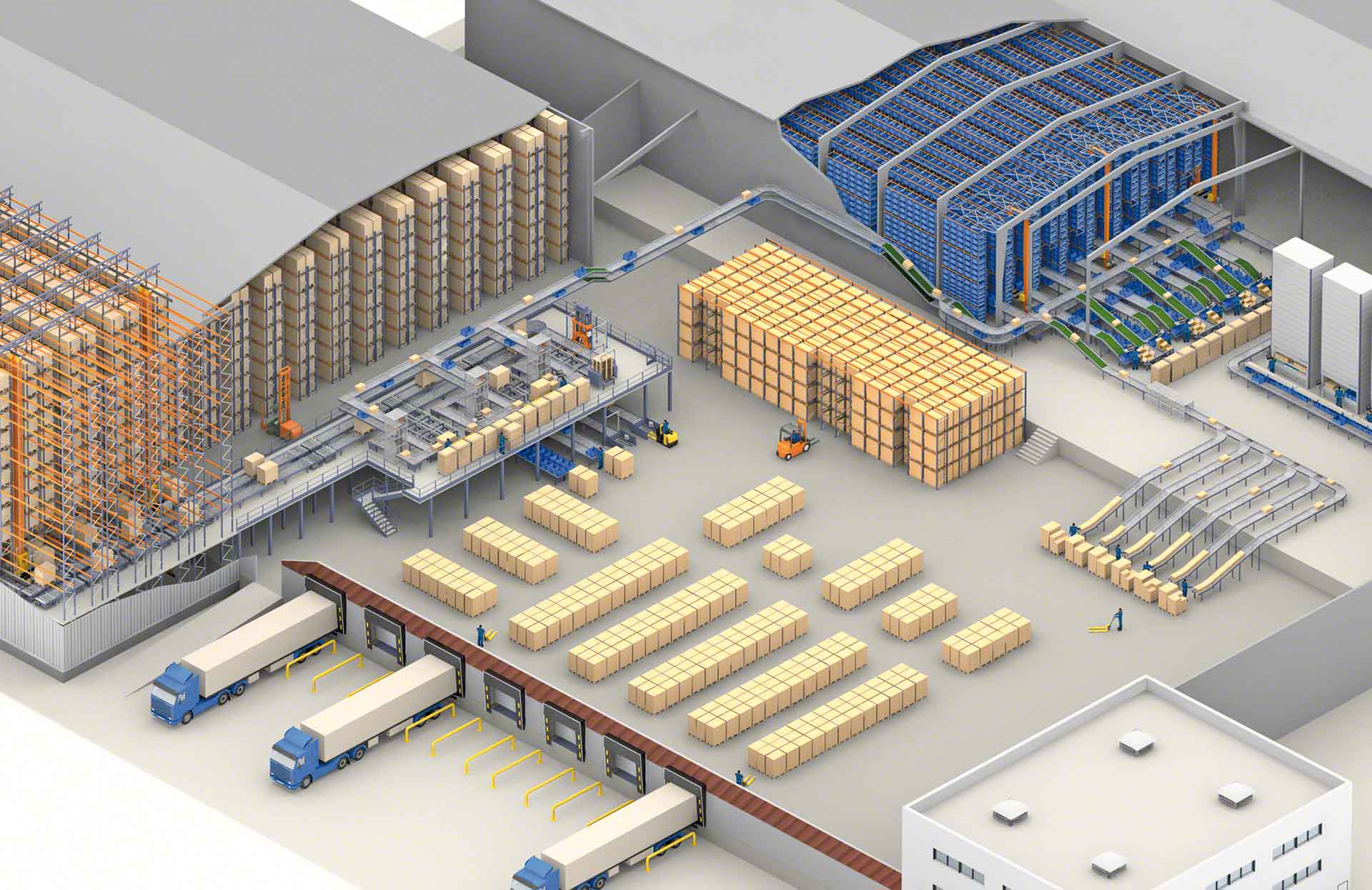In the fast-paced world of logistics and supply chain management, having an efficient and well-designed warehouse can be the difference between success and inefficiency. A custom warehouse design can help you make the most of your space, streamline your operations, and ultimately save valuable time and resources. In this comprehensive guide, we will take you through the essential steps to get started with warehouse design, from an in-depth understanding of your specific needs to the actual implementation of the invention.
Optimize Space with Custom Warehouse Design
Understanding Your Unique Needs
The very first step in embarking on the journey of creating a custom warehouse is gaining a profound understanding of your unique operational needs. Your warehouse serves as the heart of your supply chain, and to design it effectively, you must begin by conducting a thorough evaluation of your current warehouse operations. This evaluation should identify the areas that require improvement, be it due to space constraints, workflow inefficiencies, or specific industry-related requirements.
Budgeting for Your Custom Warehouse Project
Before you dive into the design process, it’s imperative to establish a realistic budget for your custom warehouse project. Your budget should encompass all expenses related to the design and construction of the warehouse, including construction costs, equipment, technology, and any consulting fees. Balancing your budget with your objectives is vital, as it will determine the feasibility of your design while ensuring that it’s efficient and cost-effective.
Selecting the Ideal Location
The location of your warehouse plays a pivotal role in the overall efficiency of your supply chain. To make an informed decision, consider proximity to suppliers, customers, and critical transportation infrastructure. Access to major highways, ports, and railroads can significantly impact your ability to receive and distribute goods efficiently. When selecting a location, it’s crucial to consider potential future needs and expansion plans to ensure your warehouse remains well-positioned in the long term.
Crafting the Warehouse Layout
With your objectives in mind and a budget in place, it’s time to roll up your sleeves and start crafting the layout of your custom warehouse. Collaborating with experienced warehouse design professionals or leveraging specialized software can help you create an optimal structure that maximizes space, streamlines workflows, and enhances safety. In addition, pay meticulous attention to the placement of storage racks, shelving, and equipment to ensure that every square foot of your warehouse is utilized efficiently.
Harnessing the Power of Technology
The integration of advanced technology is a cornerstone of modern warehouse design. Incorporating the right technology can significantly enhance your warehouse’s efficiency and accuracy. Warehouse management software (WMS) is a valuable tool to help you manage inventory, track shipments, and optimize order picking. Furthermore, consider automation solutions like conveyor systems and robotic pickers to boost productivity and streamline operations.
Incorporating Sustainability
Sustainability is no longer an optional consideration in warehouse design; it’s a necessity. By implementing eco-friendly design elements, you not only reduce your environmental footprint but also save on long-term operational costs. Consider incorporating LED lighting, solar panels, and rainwater harvesting systems to make your warehouse more environmentally responsible. These green initiatives not only reduce your carbon footprint but can also lead to significant cost savings over time.
Navigating Compliance and Regulations
However, Custom warehouses often have to adhere to specific industry regulations and compliance requirements. To ensure that your design meets all necessary safety and regulatory standards, consult experts in your field. Hence, this might involve implementing robust fire safety measures, enhancing security protocols, and adhering to industry-specific guidelines to guarantee that your warehouse is safe and compliant.
Strategic Storage Systems and Methods
Furthermore, the choice of storage systems and methods is a pivotal decision in warehouse design. Depending on your specific inventory, you may opt for traditional pallet racking, cantilever racks for more substantial items, or high-density storage solutions like push-back racks for increased storage efficiency. Each storage system has its unique advantages. Moreover, selecting the right one can have a profound impact on your warehouse’s efficiency and productivity.
Optimizing Workflow Design
An efficient workflow is the backbone of a well-functioning warehouse. Carefully plan the path products take from arriving in your warehouse to their final destination during order fulfillment. The layout must minimize unnecessary movement and bottlenecks, leading to quicker order processing and reduced labor costs. The streamlined workflow also enhances the overall experience for your employees and customers.
Prioritizing Safety Measures and Ergonomics
Warehouse safety is paramount. Incorporate safety measures like proper lighting, non-slip flooring, and marked pathways to ensure that your warehouse is a secure environment for your staff and goods. Pay attention to ergonomics to reduce the risk of employee injuries. In addition, Well-designed workstations, appropriate material handling equipment, and comprehensive employee training are all vital components of creating a safer working environment.
Building Flexibility and Scalability
Moreover, Custom warehouse design should allow for flexibility and scalability. As your business grows and evolves, your warehouse should be able to adapt to changing needs. Consider incorporating modular designs or flexible expansion options to ensure your warehouse can grow with your business.
Employee Training and Engagement
Involving your employees in the design process can lead to better results and smoother implementation. Train your staff on the new warehouse design and its benefits. Their feedback can be invaluable for identifying potential issues and optimizing the overall efficiency of the operation. Engaged and informed employees are more likely to embrace and effectively utilize the new warehouse design.
Testing and Fine-Tuning
Before fully implementing your warehouse design, it’s crucial to conduct testing and fine-tuning. Identify any issues in the workflow, layout, or technology and make necessary adjustments. This phase ensures your warehouse operates seamlessly when it goes live, minimizing disruptions and maximizing efficiency from day one.
Construction and Implementation
With the design finalized and any necessary adjustments made, it’s time to move forward with construction and implement the new warehouse layout. Work with experienced contractors and project managers to ensure the project stays on schedule and within budget. Effective project management is essential to ensure the smooth execution of your warehouse design plan.
Post-Implementation Evaluation
After the warehouse design is implemented, conduct a post-implementation evaluation to ensure that your objectives are met. Monitor key performance indicators (KPIs) such as order fulfillment times, inventory accuracy, and operational costs. Adjust as needed to optimize your warehouse further.
Continuous Improvement and Adaptation
Warehouse design is not a one-time task. To maintain efficiency and competitiveness, continuously assess your warehouse’s performance and look for improvement opportunities. Implement regular reviews and updates to keep your warehouse running at its best. The world of logistics and supply chain management is constantly evolving, and your warehouse must adapt to these changes to remain at the forefront of your industry.
Conclusion
In conclusion, custom warehouse design that aligns with your needs and objectives is complex yet highly rewarding. It demands an in-depth understanding of your unique requirements, the setting of clear and realistic goals, prudent budgeting, and the integration of the right technology and systems. A well-designed warehouse can significantly enhance efficiency, reduce costs, and improve customer satisfaction.
However, it continues after the initial design and implementation. Regular evaluation and adaptation are essential to ensure your warehouse remains efficient and competitive. As the landscape of supply chain management continues to evolve, staying ahead of the curve and optimizing your warehouse design will be critical factors in your ongoing success. With a custom-designed warehouse, your business can adapt, grow, and thrive in the ever-changing world of logistics.










